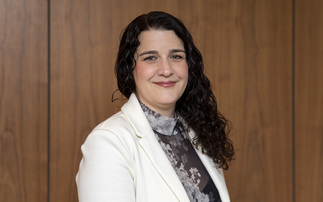Nick Baker of Bakehouse Communications shares research about buying products online and suggests ways to improve consumer confidence
As a channel for buying financial services products, digital is multi-faceted. The fastest growing area is mobile and now over 58% of web visits are conducted via tablet or mobile ahead of PC. This has doubled between 2010 and 2014, according to an ONS study published in August 2014.
Never has it been more imperative to offer a multi-channel user experience, embracing PC, telephone, mobile, tablet and face to face. In the future we will be adding wearable technology, internet-enabled devices, virtual technology such as holographic displays, and artificial intelligence-driven offerings to this list.
Measuring the user journey
As the multi-channel environment grows into an omni-channel customer experience, the importance of measuring the total user journey grows with it.
Good digital teams will be measuring inter page and intra page user journeys and behaviour. Sales funnels become more complex as the interaction with multi-channel experiences, external factors, social engagement and probably new influences yet to be dreamed of, come into play. In financial services, measuring visitor flows, visitor to quote and quote to buy ratios will always be important metrics. However, I would argue that these in their own right are not enough.
There is one important area of Management Information (MI) that hitherto has not been measured in any scientific or systematic way by providers or distributors of financial products. This is the subject of customer comprehension. What do we mean by this? It is an area where providers will become more focused as part of improving customer outcomes and mitigating conduct risk. These are the areas of customer understanding we feel are important at the point of purchase:
• How well does the customer understand what they are buying?
• Are they choosing the right product for their needs?
• Do they fully understand the key risks they face buying and owning the product?
• Do they understand the commitment they are making?
• What is their understanding of the type of service they have received before coming to the site and during the user journey itself?
In the past the purchase of financial products without advice was the reserve of more experienced and knowledgeable clients. But all of this is changing with the impact of disintermediation, the impact of consumers paying for advice from their own pocket, adviser firms cherry-picking the mid- to high-net-worth customer base, and the reduction in the supply of advice on the high street. Coupled with the forthcoming pension changes that will make pension monies more accessible and potentially prone to poor buying decisions, there is a perfect storm developing for mis-buying issues on a grand scale.
Product simplification
The simplification of products is the direction of travel for product design, and will help lower the barriers that create complexity in the buying decision. In addition, the need for extra initiatives to help consumers boost their confidence when making their own buying decisions.
Recent research conducted by Bakehouse Communications into the levels of online buying confidence and knowledge shows the need and demand for new online initiatives to help consumers make the leap.
Confidence lower than knowledge
When we overlaid the consumers own assessment of product knowledge we were surprised to see in all cases it was higher than their confidence to buy online without the aid of an adviser. This even applied to familiar and highly commoditised products such as motor and household insurance.
The ability to choose products was a key component in the FSA’s 2006 benchmark study of financial capability. In this study it scored lowest across all other factors. The 2014 work by the Financial Capability Group included knowledge amongst its key financial capability factors.
Some of the research showed some alarming misconceptions of financial issues especially among the under 35 age group. For example, 44% of those under 35 didn’t understand the relationship between interest rates and inflation in the concept of real rates of return.
How to fill the confidence gap
Our research of a nationally representative sample of the UK population (sample size 2,000) tested some initiatives we felt might help improve confidence to buy online without advice.
Top of the list were guides in brochure and video formats, followed by flowcharts and co-browsing software. More advanced ideas such as an Artificial Intelligence Advice Service or the use of gamification, scored much higher among the under 35s.
‘Readytobuy’
We then went on to test a new concept we call ‘readytobuy’, which has now completed its pilot test over the past seven months with a major bank. Using a personalised question set aligned to a customer’s specific purchase, readytobuy appears at the final stages of the buying process.
It helps the consumer self-validate that they understand what they are buying, what need it fulfils, the associated risks and their understanding of the type of service they have received. We believe the application of point of sale verification systems is far more effective in improving customer outcomes and reducing conduct risk than relying on post sales sampling.
Readytobuy achieved a net helpful rating among 61% of all respondents. Interestingly, this went up to 72% among respondents aged 18 to 34. This correlates with lower levels of understanding and confidence among the younger market. These are the very people who need to start life cover, begin saving for retirement and provide for other protection needs.
If readytobuy can help overcome this reticence to self-serve where advice is not affordable or unavailable, then it will perform a valuable service to what we see as an increasing online community.
Over the years, we’ve seen far too many fines for mis-selling financial services products, and we remain optimistic and committed to ensuring that this should not be repeated in the growing self-directed community.
Nick Baker is managing director of Bakehouse Communications








